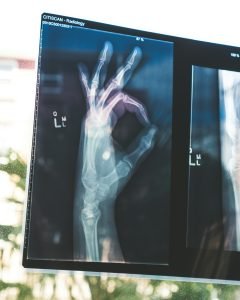Welcome new mothers! Your new baby is here and let me guess you are overjoyed with your new life! However, do you feel like fatigue is setting in, and frankly like a stranger in your own body? Do you want to reacquaint yourself with the concept of abs, strengthen your pelvic floor, improve your posture and banish back pain forever? I know just the thing: postnatal Pilates! Find out how this sport can help you get back in shape and feel amazing as a new mother.
Is Pilates good for postpartum?
Looking after a baby is a full time job that requires both strength and A LOT of energy. You’ll need a strong core for all that baby carrying in the first few months. You’ll also need to think about nurturing your pelvic floor post birth.
Enter Postnatal Pilates, the perfect sport that is both a gentle and effective method to strengthen your muscles, quicken postpartum recovery and help you build the strength and energy you’ll need to embrace motherhood!
What are the benefits of postnatal Pilates?
Pilates is a gentle yet effective method accessible to anyone! Whatever shape you’re currently in, whatever your body type, your body has just gone through massive changes during pregnancy and childbirth. Postnatal Pilates will help you:
- Rebuild a strong core
- Get a defined waist
- Tone and strengthen your pelvic floor (Say goodbye to embarrassing leaks!)
- Straighten and elongate your posture (Think open shoulders and a strong back)
- Develop awareness of your posture
What is postnatal Pilates?
So what exactly is postnatal Pilates and why should you be doing it? There are two major areas to work on after pregnancy and childbirth, both of which are equally important: the core (especially the transverse muscle), and strengthening the pelvic floor.
The essential role of the pelvic floor
Shaped like a small hammock, the pelvic floor supports the genitals and viscera (the large organs inside the body). I’m going to be honest and tell you that it gets significantly distended during the 9 months of a pregnancy. This is why it is so important to strengthen your pelvic floor:
- To prevent an organ descent
- To prevent bladder weakness (aka incontinence, yes really!)
- Better sensations during sexual intercourse
- Reduce back pain: when the pelvic floor is engaged, it has a knock-on effect on other abdominal muscles, resulting in a more stable pelvis and trunk aka less back pain
The transverse abdominis muscle
The deepest of the abdominal muscles, the transverse muscle plays a major role in maintaining the large organs inside the body and it also works as an accessory breathing muscle.
When contracted, the transverse muscle increases intra-abdominal pressure and stabilizes the pelvis and lumbar region.
This muscle acts like a real corset, and strengthening it will :
- Refine your waist
- Improve your posture
- Reduce back pain (which often goes hand in hand with pregnancy)
It is also worth noting that postnatal Pilates is not only a great sport for post pregnancy and childbirth recovery, but it is also a great preparatory sport if you plan to have any more pregnancies. In short, helping your body recover on the inside and outside is necessary whether you plan to have one or more pregnancies.
What happens in a postnatal Pilates class?
A postnatal Pilates class usually begins on a mat with some basic Pilates exercises. These exercises may seem simple, but they demand a lot of concentration to execute the moves correctly.
If your class takes place in an equipped Pilates studio, you could quickly move onto the Reformer (a Pilates machine). Using the Reformer will help you gain more awareness of your body and specifically your trunk.
Postnatal sport: 4 tips from a Pilates instructor
Not only am I a Pilates instructor, I am also a mother! So, it is dear to my heart to share with you the things I found helpful when starting a postnatal sport journey.
1. Take your time
They say it takes 9 months to carry a baby and 9 months to get over it. Chances are you may well be feeling overwhelmed between the short nights, hormonal roller coaster, childbirth itself, and your responsibilities as a new mother. This is normal! Don’t be too demanding on yourself, and give yourself time to adjust to life as a new mother.
Try to have some “me” time whenever possible in the first few months. And when you feel ready to exercise, work with your midwife and start with a course of Kegel exercises for your pelvic floor. Once that’s done, you can think about resuming a sport that is compatible with all aspects of your new life as a mother.
2. Gently does it
I highly recommend walking as one of the first activities to try postpartum. You’ll gently exercise your entire body, get your cardio in and there is nothing like a bit of fresh air to clear the mind! Try to go for a walk in nature if possible, near the sea, and perhaps listen to your favourite music or podcast.
As the days and weeks go by, you can start increasing your speed and bring your awareness to your abdominals. Try to engage your abs by drawing the belly button in towards your spine and contract the pelvic floor at the same time.
3. It’s not all about getting your abs back
Try to develop awareness of your posture every day. Do this by drawing your belly button in and elongating your spine, opening your shoulders and chest. At the same time, breathe whilst keeping the belly drawn in. Do this a little bit every day and progressively you will notice your core getting stronger, your posture improving and it will also help you reduce lower back pain.
4. Be kind to yourself
Last but not least, be kind to yourself! Do yourself a favour and do not watch the videos of supermodel mums who already have their body back all whilst baby is napping perfectly.
Oftentimes, people portray only the good stuff on social media and it is not necessarily an accurate representation of real life. Finally, don’t try to do advanced exercises you might see in an online video at home.
When and where to practice postnatal Pilates
When you have gotten the all clear from your doctor and you feel you are ready, you can try postnatal Pilates. Bear in mind that if you’ve had a cesarean delivery, doctors usually recommend waiting about a year before partaking in exercise that really challenges your abs (due to the scar).
If you’re wondering where to practice, go for what works for you. Whether that’s a private class at your home, an outdoor class, a studio class on a Pilates machine… there are many options. Maybe you prefer an at home class so you can workout with your baby nearby and make the most of your time. Or if you do decide to go for a studio, choose one that is baby friendly! See what’s available in your area, and if you have any questions don’t hesitate to drop them in the comments below.
Yours in Pilates,
Kelly




